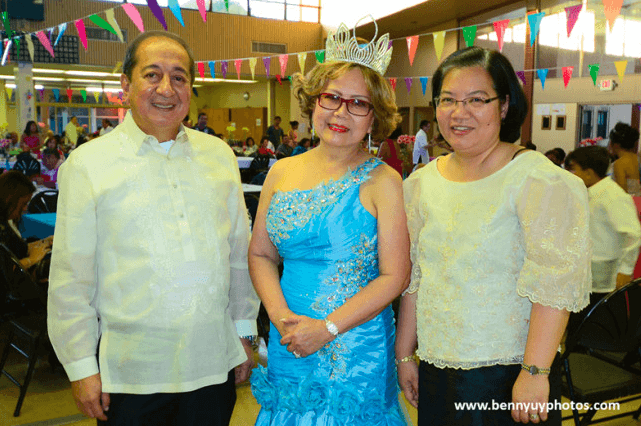BALDWIN PARK—In this placid and sinless community that was misting into early summer evening, the Flores de Mayo (also know as Flores de Maria), a month-long custom and celebration, which is steeped in history and religious beliefs.
The month of May culminates with the Santacruzan — the grandest and the most popular religious festival in many towns and cities throughout the Philippines, as the highlight of the month-long celebration of Flores de Mayo during the merry month of May.
The festival was introduced to the country during the Spanish period and continued to be celebrated by all our kababayans all over the world.
According to a popular legend, the back story was that St. Helena, the mother of Constantine the Great, went to Calvary 300 years ago after Christ’s death to search for his cross.
At the site of the crucifixion, she unearthed three crosses and had her sick servant lie down on each one. Upon touching one of the three, the servant was cured. This determined that it was Christ’s cross.
Another belief is that the Santacruzan celebration started after the Immaculate Conception of Mary was declared as a dogma in 1854, and after the publication of Mariano Sevilla’s translation of the devotional: ”The flower of May, or the Beautiful Flowers that in the meditation during the whole month of May are offered by Devotees to Mary the Holiest…,” poetically translated.
This is usually celebrated with a parade of decorated floats and elaborately-dressed characters, representing various aspects of the Blessed Mother and other figures.
In Spanish times, parish priests would choose the Hermanas and sponsors from wealthy families.
These women would shoulder the expenses, plan the festival, decorate the church, as well as the Caroza(float), which would be used in the parade.
Miss Vina Nacionales, this year’s Hermana, who has aplomb but inherent humility, did a fantastic job.
There is the sagala, a religious historical beauty pageant held in many cities, towns and even in small communities throughout the archipelago during the month of May.
Many movie and television personalities participate in these most colorful aspect of the festival. It has become part of Filipino traditions, identified with youth, love and romance.
It is a procession which commemorates the search of the Holy Cross by the Reyna Elena and her son Constantine, the newly converted emperor.
It is said that after the Holy Cross was found in Jerusalem and brought back to Constantinople, there was this great celebration for thanksgiving and religious merriment.
The procession in the Santacruzan Catholic Parish of St. John the Baptist unfolded. It was preceded by a High mass, hymn of adoration and praying of the rosary.
During the parade of the sagalas, little girls (as angels) danced, rollicked and frolicked, in a dance of joy and jubilation known only to pure and innocent hearts. They were later joined by the Sagalas.
Devotees followed the procession while reciting the rosary and while singing songs of praises. They were accompanied by a brass band and a bevy of beautiful sagalas, and distinguished members of the parish.
The highlight of the festival is the Reyna Elena. The other sagalas represented the many titles of the Virgin Mary.
Then, the parishioners and devotees offered their flowers and prayers to the image of the Blessed Virgin Mary.
The night ends with singing, dancing, treats in the program and a lot of exulted jubilations.





